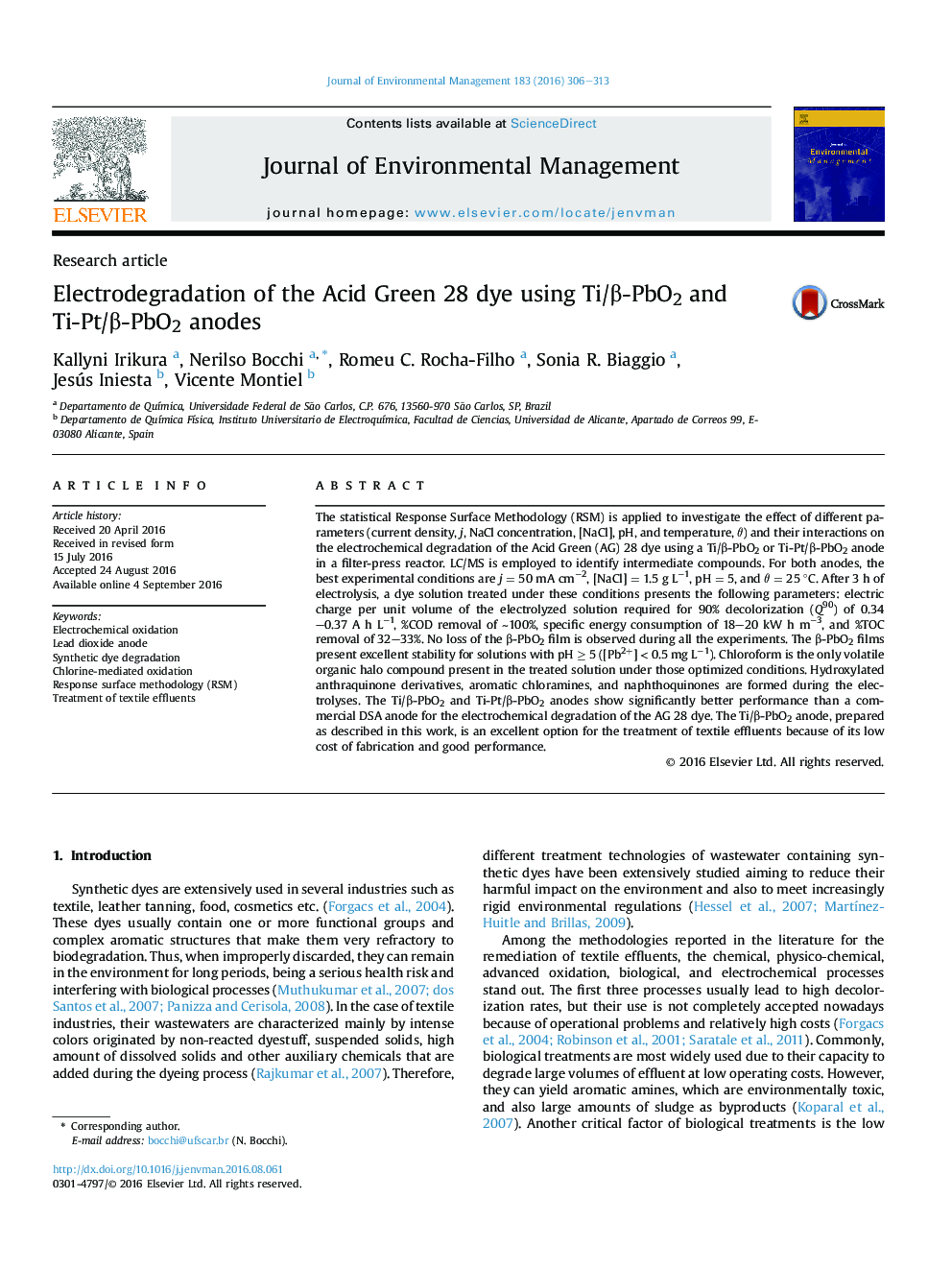| Article ID | Journal | Published Year | Pages | File Type |
|---|---|---|---|---|
| 5117315 | Journal of Environmental Management | 2016 | 8 Pages |
â¢For the first time, the degradation of the AG 28 dye is carried out electrochemically.â¢Ti/β-PbO2 and Ti-Pt/β-PbO2 anodes yield much better performances than a DSA anode.â¢The stability of the β-PbO2 films is excellent ([Pb2+] < 0.5 mg Lâ1) at pH values â¥Â 5.â¢Ti/β-PbO2 anodes (lower cost) are an excellent option for textile effluent treatment.â¢A tentative mechanism is proposed for the initial electrodegradation of the AG 28 dye.
The statistical Response Surface Methodology (RSM) is applied to investigate the effect of different parameters (current density, j, NaCl concentration, [NaCl], pH, and temperature, θ) and their interactions on the electrochemical degradation of the Acid Green (AG) 28 dye using a Ti/β-PbO2 or Ti-Pt/β-PbO2 anode in a filter-press reactor. LC/MS is employed to identify intermediate compounds. For both anodes, the best experimental conditions are j = 50 mA cmâ2, [NaCl] = 1.5 g Lâ1, pH = 5, and θ = 25 °C. After 3 h of electrolysis, a dye solution treated under these conditions presents the following parameters: electric charge per unit volume of the electrolyzed solution required for 90% decolorization (Q90) of 0.34-0.37 A h Lâ1, %COD removal of â¼100%, specific energy consumption of 18-20 kW h mâ3, and %TOC removal of 32-33%. No loss of the β-PbO2 film is observed during all the experiments. The β-PbO2 films present excellent stability for solutions with pH â¥Â 5 ([Pb2+] < 0.5 mg Lâ1). Chloroform is the only volatile organic halo compound present in the treated solution under those optimized conditions. Hydroxylated anthraquinone derivatives, aromatic chloramines, and naphthoquinones are formed during the electrolyses. The Ti/β-PbO2 and Ti-Pt/β-PbO2 anodes show significantly better performance than a commercial DSA anode for the electrochemical degradation of the AG 28 dye. The Ti/β-PbO2 anode, prepared as described in this work, is an excellent option for the treatment of textile effluents because of its low cost of fabrication and good performance.
